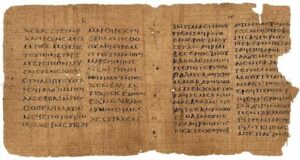Either for yourself or a gift, buying a bible is an important decision.
 The prospect of purchasing a Bible for oneself or as a gift, usually does not cause any anxiety in the average individual, at least, that is until they walk into a typical Christian bookstore and find that there may be no less than ten different English and sometimes 15 or more! In addition, there are different shapes, formats, study bibles, reference bibles, and generally one for any need.
The prospect of purchasing a Bible for oneself or as a gift, usually does not cause any anxiety in the average individual, at least, that is until they walk into a typical Christian bookstore and find that there may be no less than ten different English and sometimes 15 or more! In addition, there are different shapes, formats, study bibles, reference bibles, and generally one for any need.
The moment you encounter these choices, numerous questions flood the mind: Which translation is the best? Which is accurate? What Bible does my church use? What features do I want in a Bible?
Let’s be honest, most of us have no idea on how to answer these questions. To the uninitiated, it can suddenly be overwhelming. It doesn’t need to be. Choosing the appropriate Bible requires just a “little” bit of information, so you can be confident that it will be the right one for you.
A short history
The Bible itself is composed of different books, by different writers, under the inspiration of the Holy Spirit. Before Christ was born, Jews produced a Greek translation of the Hebrew Old Testament for the Jews living in Alexandria, a Greek speaking city. This translation was called the Septuagint (meaning 70), which referred to the 70 translators who worked together to produce it. This solved the immediate problem of Jews living in Greece who no longer spoke Hebrew, but as Christianity spread, and the New Testament came into being, the need for Egyptian, Ethiopic, Gothic (German) and other ethnic translations became evident.
Because the Roman Empire spread its control over much of the known world, Latin emerged as the common language in many of its cities. The Bishop of Rome commissioned the scholar Jerome to translate the Scriptures into Latin in 382 AD. His version became known as the “Vulgate” translation. For over a thousand years, this translation was the unofficial standard text of the Bible through out the Middle Ages. The problem was that as the Christian church evolved into the Roman Catholic Church, translations were generally unavailable to most of the people because of the fear that various interpretations of the scriptures would lead to contentious disarray, or discord, and the fear that the Church would lose control of being the chief interpreter of what the people should believe.
Courageous individuals, however, believed that the Bible should be read by even the common people, and set out to translate the Vulgate into other languages for the average person. John Wycliffe, William Tyndale, and Martin Luther were early translators who encountered significant opposition to their efforts, leading to thousands of their printed copies being burned in the streets, as the fears of a corrupt version of the Bible pervaded ruling parties. Tyndale himself was burned at the stake for the crime of heresy. But the tide and quest for an English Bible could not be thwarted, and other men came forth with new translations.
Finally, in 1611, England’s King James ordered a court of translators to begin a translation aptly named the King James Version. The KJV, as it was commonly called, became the standard translation for over 400 years for protestant denominations and is widely considered by lay persons as being the most accurate. It is interesting tonote, however, that the translators of the King James version were greatly influenced in their translations, by both Tyndale’a, and a subsequent translation–the Geneva Bible.
Today, the intrepid seeker of a Bible has many translations to choose from. Why the need for so many different translations? It is because the English language has evolved, and will continue to evolve rendering even the newest translations of today obsolete in future years. For example, take a look at James 5:11 in which we are told “the Lord is very pitiful”. Is the Lord pitiful? In the days of King James, He was, because it meant “one who has pity on others”. Every few years thousands of new words enter into the English language causing new translations to utilize verbiage that will accurately communicate the intended meaning of the authors. Nowhere is there a better example than in Isaiah 10:15-19 in which the King James version virtually is incomprehensible to today’s reader. Take a look at some excerpts from these verses:
“Should the axe boast itself against him. As if the rod should shake itself against them. ” The Lord will send among his fat ones leanness…And consume the glory of his forest…”
Now look at the same verses in the New Living Translation in which it is clear who the Lord is speaking to, and what He is going to do.
“Listen, King of Assyria, because of your boasting, I will send a plague among your proud troops. Your army is like a forest, yet it will be destroyed”.
In your search, determine if you want a translation that is primarily used by your church of choice or simply a Parallel Bible in which several translations are side by side, and see which is most understandable to you.
Whether you choose the KJV for its rich and colorful language, or other newer translations which more closely approximate our language of today, is a matter of personal choice.
Is that all?
Once, you’ve determined the translation that is most comfortable to you, you can decide on exactly what your needs are. Here’s a quick rundown.
REFERENCE BIBLE: This is a Bible that along with scripture, gives you various references to other verses which give insight into your particular verses you are reading.
STUDY BIBLE: Study Bibles aid in giving expert commentary to various verses on historical context, customs, or additional insight into the verses being studied.
STUDY and REFERENCE BIBLES: Have both references and commentaries.
QUEST STUDY BIBLES: A great favorite as a study bible. It doesn’t have commentary, but has questions and answers on each page of scriptures you read. A great teaching resource.
CRONILOGICAL BIBLES: Give the events in the order that they occurred.
DAILY READING BIBLES: Planned reading for each day, enabling the reader to read the entire bible within one year.
DEVOTIONAL BIBLES: These Bibles along with the scriptures, give daily devotionals that are relevant to the particular verses being read.
PARALLEL BIBLES: Give 2-4 different translations side by side to compare
GIANT PRINT BIBLES: Have enhanced script for individuals who have difficulty reading smaller print.
INDEXED BIBLES: These Bibles have indexed cutouts which enable the reader to easily find a particular book or passage.
YOUTH BIBLES: Today’s Bibles are age appropriate, and geared to the age of the reader, often with life principles.
ILLUSTRATED BIBLES: Scriptures come alive with illustrated versions which portray the scenes of the Bible stories along with the scriptures.
RECOVERY BIBLES: A Bible with an emphasis on aiding addictions.
AMPLIFIED BIBLES: An expanded or amplified translation which may give clarifying meanings from the original languages. Often with alternative words which might give deeper insight.
This is just a sample of the many diverse versions of the Bible that are available. But whatever Bible is selected, it must be diligently read through out the individual’s life, so not only can you determine the will of God for your life, but His word can “live” within you.
Some recommendations
For the vision impaired: Super Giant Print and Giant Print
For the Bible student: A Life Application Study Bible ( NIV, NLT, or KJV)
For Men and Women, (esp. women): A Quest Bible (Questions and answers on each page of scripture)
Recommended as most readable: New Living Translation
For Teen Boys: NIV Revolution Bible (age appropriate notes and thoughts), Action Bible–Knockout graphic design
For Teen Girls: Youth Quest Bible (Age appropriate questions and answers), teen Bibles.
8-12 Yrs: NIV Study Bible, Adventure Bible, Veggie Tale Bible
Children: The Beginners Bible, Jesus Storybook Bible
[Editor’s Note: And don’t forget. You can buy Bibles online but there is something about holding a Bible in your hand, feeling the texture of the paper, the size of the text and weight of the book that you just don’t experience on Amazon. Your local Christian bookstore owner has a depth of knowledge that you should use.]
By Michael and Julie Gatrost |
 Metro Voice News Celebrating Faith, Family & Community
Metro Voice News Celebrating Faith, Family & Community 







